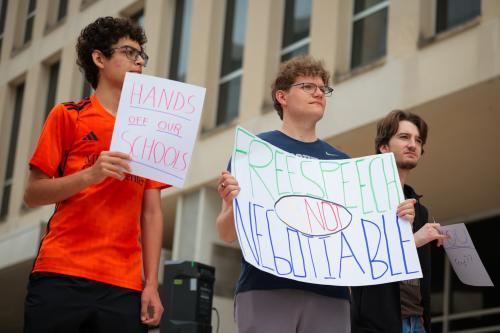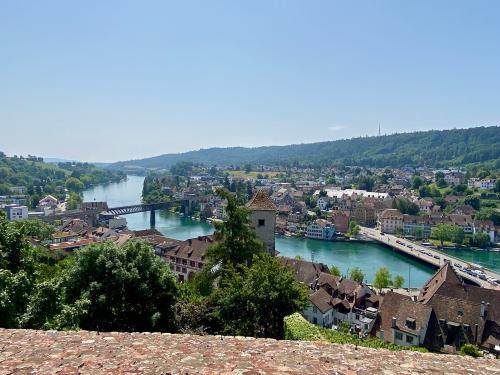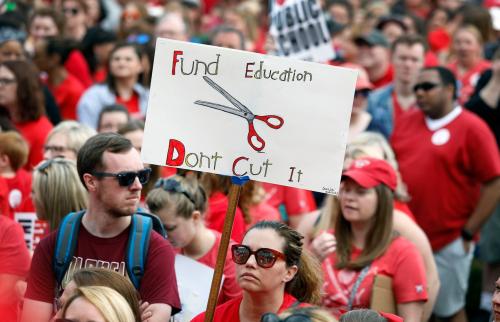One frequent criticism of the Obama administration’s welcome conviction on economic regionalism—epitomized by its programs to stimulate regional industry clusters with small matching grants usually in the $1 million to $2 million range—is that it remains small bore.
It’s true that the enormity of the nation’s economic problems calls for large-scale interventions that transcend the marginal. After all, as we at the Metro Program keep stressing, the nation has a lot of work to do to reorient a drifting U.S. economy beyond consumption and more toward innovation, production, and exports. So no wonder we and others have hankered for more heft in Washington’s economic responses. Surely, for that matter, the desire for more weighty action explains part of the interest that has been generated by the administration’s $1 billion proposal (talked up in the State of the Union address) to create a network of 15 institutes for manufacturing innovation around the nation.
And yet, what if small ball—engaged in persistently—begins to add up to something larger? That was the thought that crossed my mind when I happened onto an intriguing dot map last week that locates no less than “56 federally funded cluster initiatives” scattered across the Lower 48 states and Alaska.
##1##
The map yields genuine insight. Arrayed all across the map, the Google map push pins assembled by the Small Business Administration call out an impressive array of future-leaning collaborations aimed at advancing next economy clusters in diverse industries all over America.
There are some 18 advanced manufacturing collaborations, working on new materials, new processes, new control systems, and skills development in places as diverse as East Tennessee and Iowa and Southern Arizona and greater Philadelphia. There are 10 clean energy technology projects ongoing in Southeast Michigan, Florida, San Diego, Oregon, the Carolinas, and elsewhere. There are initiatives working to rally various actors in the food industries of New England, Bristol Bay, and the Finger Lakes region. And there are other efforts focused on IT, the space economy, water technology, and wood products—all collaborative, all aimed at convening the actors in a regional cluster, coordinating disparate efforts, and reducing the risks of innovation and investment.
Nor is that all. Beyond all of that, another map on the Economic Development Administration website identifies another 19 regional innovation projects that have been funded through the EDA’s i6 program. Similar to the cluster efforts, the i6 effort provides matching support to innovative initiatives that propose accelerate technology commercialization, new venture formation, job creation, and economic growth in U.S. regions.
The inescapable conclusion: Proliferating under the radar, the Obama administration’s “small bore” regional initiatives in economic development are beginning to add up to something meaningful. As of now some 74 cluster initiatives and region-focused innovation efforts are underway, helping to catalyze more linked effort and creative economic development in the nation’s regional centers of innovation. Through these initiatives some $250 million is being used to raise matching money and catalyze regional efforts to strengthen the nation’s regional innovation ecosystems.
To be sure, it’s a big country, and the cluster grants remain tiny. But the fact remains, as Bruce Katz and I have discussed, that well-designed cluster and accelerator strategies—ones that require sizable local matches through competitive award processes—are a low-cost way to stimulate a significant amount of collaboration, innovation, and new economic activity in the local economic regions that are the ultimate source of national prosperity. For that reason, it’s good to see the map filling up. The nation badly needs to avoid big mistakes slashing federal R&D investments through the sequestration. And it needs to deliver on game-changers like immigration reform while implementing bold experiments like the manufacturing hubs. But it also needs to maintain and extend the broad array of modest partnerships that the map shows are gradually renewing the innovation commons in U.S. industries, region by region, cluster by cluster.
The Brookings Institution is committed to quality, independence, and impact.
We are supported by a diverse array of funders. In line with our values and policies, each Brookings publication represents the sole views of its author(s).



Commentary
Regional Innovation Clusters Begin to Add Up
February 27, 2013